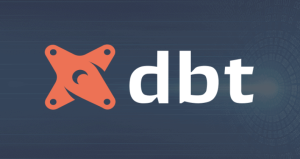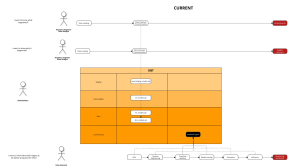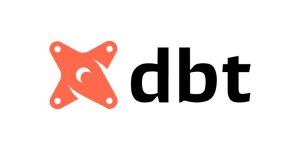7 Real-World Examples of Business Intelligence in Use
Written by Matt David on May 12, 2020
While the core definition of business intelligence (BI) has remained relatively the same over the past 155 years — using data to make good business decisions — how businesses use BI has changed quite a bit.
Examples of business intelligence in use vary widely because, over the past two decades, BI technology transitioned from highly technical tools that expert teams use to more user-friendly, cloud-based software. This has made it more agile and accessible than ever before, leading to a proliferation of different BI use cases.
Even so, the common trait among the most effective BI tools is that they are built with the business user in mind, allowing anyone across the company to access, analyze, and act on data without coding knowledge.
There are a lot of benefits to this widespread “culture of data,” like removing bottlenecks in company-wide workflows; reducing grunt work, so you can tackle more important tasks; and, ultimately, proving the validity of your business through growth.
But the best way to explore these benefits is through specific examples of business intelligence in use. Below are seven companies using business intelligence to not only make good business decisions but also to shape the future of their respective industries.
First, let’s set the stage.How is business intelligence used?
Companies can use business intelligence to make a company’s raw data usable. The goal is to make better decisions about your business by utilizing your data in more efficient and effective ways.
Because BI has improved so much in the past decade, it’s much easier for more employees across the company to benefit from it. That’s because much of what makes up a business intelligence system is now streamlined or automated. What is a business intelligence system?
According to Solomon Nash and Paul Gray, professors at Kennesaw State University and Claremont Graduate University, a business intelligence system consists of data gathering, data storage, knowledge management, and analysis.
- Data gathering collects information from every source and funnels it into one place. An example of technology that powers this is a customer data platform like Segment.
- Data storage safely hosts all of that data in a data warehouse, like Amazon Redshift.
- Knowledge management is how all this data gets disseminated throughout an organization.
- Analysis is, well, the analysis of this data to aid in decision-making.
What companies use business intelligence?
Most organizations do some form of business intelligence, but it’s not uncommon for a lot of it to be manual work. For instance, a small startup’s “data gathering” may be manually exporting CSVs from each data source. If they store all those spreadsheets on Google Drive, that’s essentially their data warehouse.
This kind of process works OK up to a point, but it’s not sustainable for most businesses.
BI tools (especially self-service BI tools) manage your business’s data in a way that’s more secure, easier to manage, and simpler to use. And the best BI tools automate much of the system we outlined above, allowing employees to focus their efforts on analysis and taking action.
The companies that benefit most from using business intelligence tend to be those that require their employees to make independent decisions quickly. This makes it a good fit for startups, data-centric companies, and companies looking to grow rapidly.
Let’s dive into seven examples of business intelligence used by these types of companies.

1. Koodos proves their concept
Koodos is a new startup from Harvard Business School’s Rock Center for Entrepreneurship that builds content curation technology for Gen Z based on user-generated data. One venture capitalist called them “the competitive messaging-based Pinterest for music.”Where they started
Koodos’ business model is dependent on understanding relationships between different sets of data. Their first experiment matched emojis with music— if you texted an emoji to 566-367, you got a song recommendation from another person.
We just tried it and found that 👴 recommends “Legend” by Twenty One Pilots, which is a song celebrating the life of the lead singer’s grandfather.
It works well, but before a BI tool, they had no easy way of truly analyzing product performance to understand how their experiments were going.
They would have to download product logs as CSVs and upload them to Google Sheets. From there, they sometimes used SQL to run queries, but because their data wasn’t centralized, they found it difficult and time-consuming to prove whether their experiments were running as intended.How BI helped
With a business intelligence tool, Koodos is able to unify their data to gain an understanding of how their experiments are performing and then use those insights to build a better product.
First, they set up their business intelligence tool as a “central repository” for all product log data. With all that data collected, they could then run queries, no matter how clean the dataset was. With those queries, they could build out dashboards that compared sets of data directly in real time, making it a cinch to identify trends and relationships.
For instance, in the emoji experiment, Koodos found that the 🥺 emoji received the most song suggestions. They now know that Gen Z has more songs to recommend to people who are feeling sad than, say, people who feel like 🕺.
Using these insights helps Koodos not only build a better content curation product but also prove their product works well.Takeaway
Use business intelligence to unite all your data to understand what’s happening in your product, when it’s happening, and what to do about it.

2. New York Shipping Exchange moves faster
New York Shipping Exchange (NYSHEX) is a shipping-technology company working to improve the process of shipping overseas. They’ve been doing very well recently, doubling enrollment in 2019, thanks in no small part to business intelligence.Where they started
To make sense of overall company performance, NYSHEX used to manually extract data from their proprietary application and their various cloud apps and then import it all into Excel. Because this was such a laborious process, few people had access to this data, and most of the requests for reports fell on the engineering team to execute.
Gordon Downes, CEO at NYSHEX, explains his thoughts during that time: “There had to be a better way to make information more readily available and save time for our engineering team. We needed a solution so that I, along with the rest of the team, could explore data on the fly.”How BI helped
NYSHEX decided to give the entire company access to the data using their business intelligence tool, Chartio. This has been possible not only because all that data is centralized into one system, but also because it’s easy for someone with no coding knowledge to dive deep into analysis.
With Chartio’s drag-and-drop Visual SQL builder, any NYSHEX employee can run queries, set up dashboards, and create reports. Even if they have no idea what SQL stands for (structured query language), they can still get exactly what they need, when they need it.
NYSHEX is now an incredibly efficient operation because every employee can access and act on real-time data. Gordon says: “Chartio gets information to the people who need it so they can make decisions without taking loads of time.”Takeaway
A low-code or no-code BI solution is vital for any company looking to provide the ability to understand and act on data to every employee.
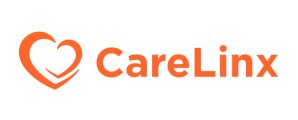
CareLinx is a nationwide, in-home care network connecting families to over 300,000 in-home caregivers. In recent years, they’ve increased their profile by establishing partnerships with the likes of AARP and Aetna. Taking their next step toward growth required them to adopt a compliant business intelligence solution so they could better serve their customers.Where they started
To serve the families that use their product, CareLinx deals with protected health information (PHI). Because PHI is sensitive, they need a BI solution that’s compliant with the Health Insurance Portability and Accountability Act (HIPAA).
Before they established a HIPAA-compliant solution, they had two systems: a BI for non-PHI data and a separate manual system for PHI data. Anytime they wanted to do any sort of business analysis, they’d have to filter out all PHI data in order to remain compliant, leading to an incomplete picture of the people they serve. This dual-system approach wasn’t feasible as CareLinx prepared to scale the business nationwide.How BI helped
CareLinx already used Chartio as their business intelligence tool for non-PHI data, so their engineering and product teams already realized the benefits of good BI. Once Chartio became HIPAA-compliant, a whole new world of opportunities opened up for them.
Now, every team in the company is able to safely query any data, PHI or otherwise, to understand their users on a deeper level. Customer success, for example, utilizes Chartio to analyze data in real time and use those insights to better serve their users.
No matter how big CareLinx gets, they can still provide personal attention to each family that uses their product by using a HIPAA-compliant BI tool.Takeaway
Look for a BI solution that addresses all your specific needs so it can grow with you.
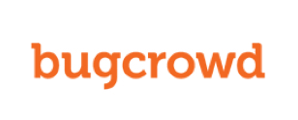
Bugcrowd is a cybersecurity platform that connects its customers to security researchers to identify vulnerabilities in products and applications. Just recently, they closed Series D funding for $30 million, and they’ve helped many Fortune 500 companiesshore up their security. And the ways Bugcrowd uses BI have helped them establish their place at the forefront of their industry.Where they started
Bugcrowd’s goal is to successfully connect companies with security researchers. In an effort to keep both groups happy, they needed to dive into the mountains of data involved in each interaction. It was too much data to handle with spreadsheets and SQL, so they turned to business intelligence.
Their requirements were strict: airtight security and the ability to handle many data sources—and it had to be easy to use. They were having trouble finding a BI tool that fit those parameters, so they considered building their own analytics system. They had the know-how to do so, but it would’ve been costly and time-consuming. Fortunately, they found a ready-made solution.How BI helped
Quite a few BI tools meet the first two requirements (security and number of sources), but, too often, they sacrifice usability to reach that point. Bugcrowd found their solution in Chartio, and with those three requirements satisfied, they were able to surpass their goal of retaining customers by keeping them happy.
To retain your customers, you need to deeply understand them and learn how they use your product. Bugcrowd used Chartio to centralize all their interaction data in one place. From there, they could dive into each interaction individually or zoom out to see them all in aggregate.
This made it much easier to identify trends and insights, and it improved the work of all teams, from “customer support for proactive problem solving” to “engineering for feature release activity.”
At first, Bugcrowd’s goal was to just understand these interactions. But their business intelligence tool made this so easy that they moved seamlessly to improving each interaction. The result was a high-touch customer service approach that helped Bugcrowd acquire new business and retain existing business.
Jonathan Cran, VP of product at Bugcrowd, says: “We are able to drive negative churn because everyone from Sales to Customer Success uses Chartio to look at how customers are interacting and ask the right questions to improve an account’s health or find an opportunity to upsell.”Takeaway
Start with a concrete and attainable business intelligence goal (e.g., understand user interactions), and then set stretch goals based on achieving that objective (e.g., improving those interactions).
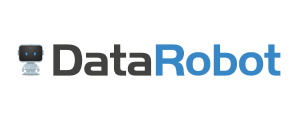
5. DataRobot democratizes data
DataRobot is an enterprise-level artificial intelligence platform that invented the automated machine-learning category. They’re used by a third of the Fortune 50 companies and recently announced Series E funding, amounting to $206 million. What would a company of this caliber need a business intelligence tool for? Quite a bit, it turns out.Where they started
As a data-centric company, DataRobot knows its way around analyzing, modeling, and presenting data. Early on, they created an ad hoc business intelligence solution, in which they created a few custom reports using Python and sent them via email. It worked pretty well for their purposes—for a while.
But after growing 60% in 2018, they realized this solution couldn’t scale with them. It wasn’t enough for DataRobot to have a data-centric culture—they needed a culture of data democracy.How BI helped
DataRobot made the choice to onboard new employees with a seat on their BI tool, Chartio. Their goal was to give every team the power to understand and act on data without the need to go through the engineering or analytics team.
The result was an 83% adoption rate of Chartio throughout the company. By incorporating their BI tool into the onboarding process, DataRobot cemented a culture of data democratization, where every employee had the power to analyze and act on data.
This culture turned out to be vital to their recent success. Daniil Bratchenko, VP of business operations and analytics at DataRobot, said, “Democratization of access to data is super important when you see how it works, and if we didn’t have it, we would be much less effective as a company.”Takeaway
Entrench your business intelligence into the day-to-day functions of your employees from day one to establish a culture of data democracy.

6. Reddit eliminates a data bottleneck
Reddit is a social media website with a focus on aggregating news and community discussion. It currently ranks seventh in Alexa’s list of Top Sites in the United States, and its ability to monetize that traffic relies on their business intelligence.Where they started
With over 430 monthly visitors around the globe, Reddit has a lot of data to deal with. Previously, the data team was tasked with completing one-off requests that not only took time away from their own projects but also made it harder for other teams to access data.
This bottleneck obscured promising insights and made it nearly impossible to fully leverage the monetization opportunities available to the seventh-most-visited site in the United States.How BI helped
Reddit didn’t originally plan on everyone using their business intelligence tool, but because Chartio was so easy to use, they kept getting requests from employees to query data on their own. The end result was a culture of data democracy like DataRobot, but through a “grassroots” progression.
Once they gave access to the rest of the company, the sales team became some of the biggest BI enthusiasts, using it to analyze Reddit’s huge data set in real time to identify when brands or products got mentioned among the 2-million-plus communities. They use Chartio and Google BigQuery to create graphs and visualizations showing how brands can naturally enter the discussions happening every day on Reddit.
This kind of insight never would have happened if the bottleneck stayed in place. It also wouldn’t have happened without a culture of data democracy. As Justin Bassett, data scientist at Reddit, says: “More people are making discoveries and uncovering answers they couldn’t have found on their own before,” later adding, “Sales have increased dramatically.”Takeaway
Leverage the culture of data democracy that business intelligence naturally develops to surface opportunities you never could’ve foreseen otherwise.

7. Clever surfaces insights collaboratively
Clever is a portal for digital learning used in 60% of K-12 schools in the United States. Its near-ubiquitous role in the modern classroom is due to the culture of collaboration made possible with their business intelligence.Where they started
Clever grew very fast and had to deal with a massive influx of data using MongoDB, a database; Amazon Redshift, a data warehouse; and SQL to make sense of it all. To keep things running smoothly, they needed a way to filter through all that data faster. Specifically, they sought to understand how educators used their technology.How BI helped
Like a few of our other examples of business intelligence, Clever took a page out of DataRobot’s book and sought to establish a culture of data democracy using Chartio, their BI tool. By giving every employee data source access to Chartio, they quickly took data democracy to a new level and now have a 90% adoption rate among all employees.
To help each other use BI more effectively, Clever created an internal group called the “Number Munchers” (named after the classic video game), who interact through a dedicated Slack channel. In this channel, they share their reports, insights, and advice with each other.
Out of this collaboration comes greater insight into how their users interact with Clever’s product. For instance, the customer success team can independently identify trends in support-ticket data from educators that the product team can then use to inform prioritization of future features.
With 90% of the company functioning like this, thanks to business intelligence, Clever is able to identify and act on insights faster. Colin DuRant, product manager at Clever, says, “In democratizing data, [we] ensured that no one would make a decision in the absence of data. When you give people access to data, you are automatically enabling them to make better decisions.”Takeaway
Use business intelligence to combine a culture of data democracy with a culture of collaboration to make better decisions faster.
Full Case StudyLeverage these examples of business intelligence to democratize data
Most of the benefits of using BI we’ve covered so far are due to one factor: more people having easy access to data.
This establishes a culture of data democracy, which has helped countless businesses improve their product, build better relationships with their customers, and ultimately grow in smart ways. The right BI tool will solve for your immediate need, like keeping teams aligned, optimizing your tech stack, or reducing time spent on reporting.
But what you gain in the process of solving these specific issues with BI will shape the future of your business and your industry.
Chartio is built to democratize data so you can reap the rewards of good BI. And the good news is that you don’t have to wait.
Get started today for free.
Article reposted from our friends at Chartio. Link to article here.
- What the heck is data analytics? Explain it like I’m five. - June 8, 2022
- Best Practices for Managing Data Access to BigQuery - October 11, 2021
- How PE firms can turn data science into a competitive advantage - October 11, 2021

